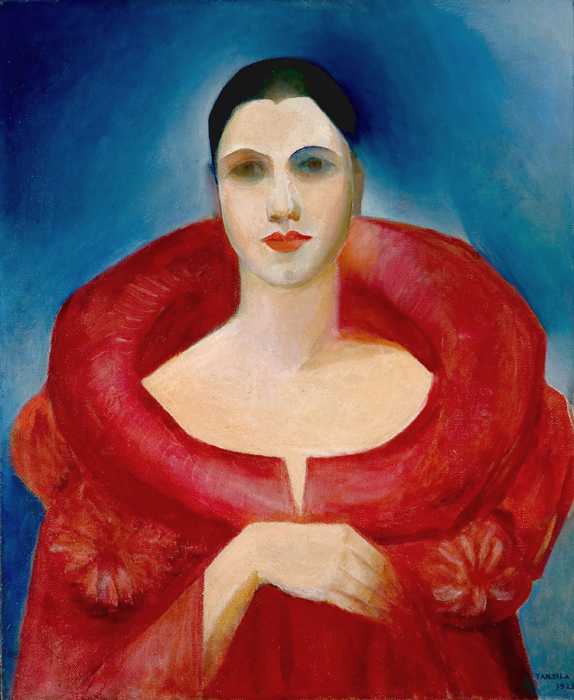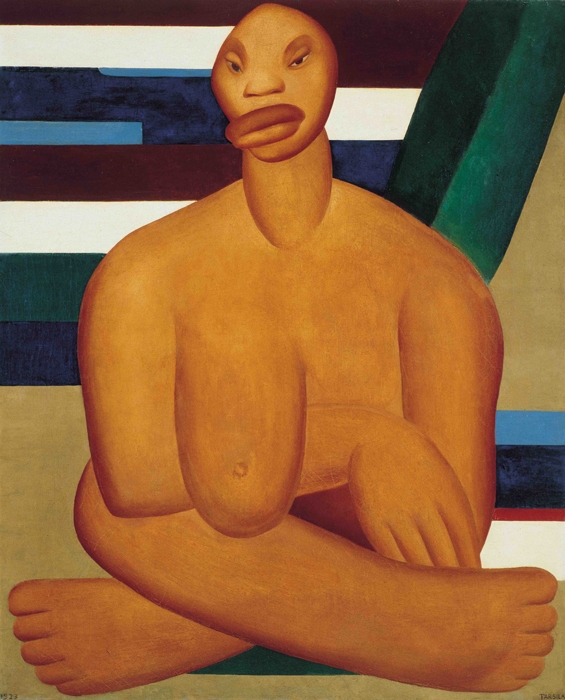This year, three works by an artist who has been dead for almost 50 years made all the headlines in São Paulo. For weeks on end, under sun and rain, in the shadow of the masp’s massive concrete underbelly, crowds queued for hours to see an exhibition of Tarsila do Amaral. These scenes on Paulista, the picture-postcard avenue that is home to São Paulo’s modern-art museum, seemed a nostalgic rerun of times before selfie culture and political chaos dominated life in this country – a recollection to when avid masses waited to see exhibitions of work by visiting superstars Claude Monet, Salvador Dalí or Pablo Picasso. But this time the star of the hour is a woman and a local, an artist Brazilians know from schoolbooks but only recently seem to have embraced as a native icon.
The Tarsila retrospective held at Lina Bo Bardi’s big box of glass and concrete had the sweet air of a homecoming. Its timing, however, couldn’t be odder. Her lush idea of modernity, a quintessential version of a tropical avant-garde – Parisian cubism softened and twisted by the blazing sun – comes at the darkest time for the arts in a nation rocked by political infighting, hateful rhetoric and reckless attempts at rewriting history. The sad spectacle of Jair Bolsonaro, Brazil’s new president, who has made censorship and an escalating war on culture a pillar of his government, lurks in the background as museums try to survive deep cuts to funding and a toxic public atmosphere. The struggle is such that almost all exhibitions, even the tamest of survey shows, come off as acts of resistance.
Tarsila do Amaral seemed to be looking for her roots when she painted in Paris, but it is a gaze driven by fetish
But this was far from anodyne. Tarsila’s works had come from a more modest retrospective at MoMA in New York, while the artist, who died in 1973, has become something of a global artworld darling, her paintings coveted by museums internationally. MASP took a bold step in its hang: three works faced the public as they stepped into the galleries – two self- portraits and A Negra (1923), one of the artist’s most revered and at the same time most controversial paintings.This depiction of a former slave, most likely a milkmaid and nanny at her family’s coffee plantation in the countryside outside São Paulo, shows the woman as a feral beast with exaggerated features – lips that are a garish protrusion from the face, a low hanging breast that droops over her arm like a strange, emaciated fruit, and a bald head that might be reminiscent of a Brancusi sculpture were it not sitting atop a mountain of nervous, almost twitching, reddish-black flesh.

In one of the paintings that flank this work, Tarsila depicts herself as a member of high society, sporting a red evening dress designed by French couturier Paul Poiret that frames her fair neck and cleavage (Autorretrato (Manteau rouge), 1923). Her hand is held in a gesture that recalls that made by the milkmaid next to her. In the other, her face seems to float against a white backdrop, a ghostly visage adorned with gold earrings and lipstick as red as the dress. The ochre hue of the skin of her ‘negress’ echoes the red earth from the plantation. Tarsila seemed to be looking for her roots when she painted this in Paris, but it is a gaze driven by fetish. While the masks of African origin she observed in Picasso’s work have undeniable influence over the features of her Negra, the work, whether Tarsila wanted it or not, became the ultimate, perhaps most violent, modernist representation of Brazil there could be. The structural racism still apparent in the social relations within this country is here clad in tropical colours and modern strokes. The smooth surfaces in the painting, the supple skin and a bright leaf hanging overhead seem to be at odds with the high voltage of its under- tones, making it an arresting clash between an involuntary expression of national pride and a testimony to the resignation of those who survived the barbarity of colonialism.
Nearly a century ago, Tarsila wanted to give visual contours to the mood of a nation steeped in its colonial history and hungry for a new aesthetic. This explains the twisted patriotic flourishes in much of her work, which paved the way for more official representations later on (not least Candido Portinari’s painting of heroic labourers, works which border on socialist realism). But most of those who crowded the galleries at MASP are Paulistas like Tarsila, unconvinced until now that their own culture was worthy of the museum. It seems the attack on the arts by this government has ignited a search for forgotten icons, a different type of national pride than Bolsonaro’s nationalism, an attempt at preserving what hasn’t been entirely lost – yet.
This article originally appeared in the November 2019 issue of ArtReview
